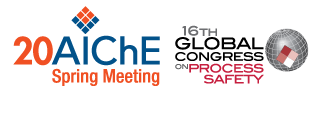

Modern processing units have traditionally incorporated positive isolation methods to protect workers, control processes, and prevent accidental product mixing, release, or exposure. These methods also work to segregate unit equipment in various stages of operation whenever an emergency may occur. Such isolation and control equipment, if properly maintained and deployed, helps to reduce risk to acceptable levels (ALARP - as low as reasonably practical). For ongoing operations, safety instrumented systems (SIS) and independent protection layer devices (IPL's) standby to halt initiating events and prevent accident sequences that may otherwise proceed to unplanned consequences such as: damaging spills, fires, or other hazardous situations. But even with the effectiveness of these systems, there are still gaps in modern processing plants, especially at the connections to blend, receive, or load various feedstock, chemicals, gases, or finished products. These connections between the facility and the rail cars, cylinders, tankers and marine vessels that serve to link them beyond their operational footprint often require the use of industrial hoses of various types to provide a quick and flexible means to direct this flow. Hoses of this type may be constructed of various combinations of rubber or polymer compounds, or even metals. Unfortunately, options for commercially available safety features integral to the hose itself are not common. So, hoses by nature of their design and use, are a notoriously weak link in any system; prone to failures induced by the environment they operate in, the wear and tear of daily use, and even abuse if improperly handled. The lack of reasonable IPL's integral to hoses therefore routinely identifies them in hazard and operability review (HAZOP) as a potential high-risk initiator of unplanned events due to common, catastrophic failure modes including: hose separation, sidewall rupture, coupling ejection/joint failure, or pull-away incidents. Regardless of the frequency or probability of these types of failures, the consequences when they do occur are very often an interruption to the operation, impactful to the environment, destructive to facilities and equipment, and harmful or fatal to personnel working in the vicinity and to the larger community surrounding the operation. Adding independent protection layers to the hose itself reduces or eliminates the risk associated with these failure modes. In such cases, it would be reasonable then to credit such devices as IPL's in the HAZOP / LOPA (layer of protection analysis) review. Following the example from other industries, this paper seeks to outline best practices in the application of industrial hoses for enhanced safety. The focus will be on hose systems which instantly and automatically halt flow in the event of hose failure to arrest hose whip, prevent destruction to the facility, stop uncontrolled release of product, and most importantly; protect the lives of personnel and the community at large. Furthermore, recommendations will be demonstrated for utilizing these devices in LOPA planning as IPL's.
Presenter(s)
Once the content has been viewed and you have attested to it, you will be able to download and print a certificate for PDH credits.
If you have already viewed this content,
please click here
to login.
Language
Pricing
Individuals
| AIChE Member Credits | 0.5 |
| AIChE Pro Members | $19.00 |
| Employees of CCPS Member Companies | Free |
| AIChE Graduate Student Members | Free |
| AIChE Undergraduate Student Members | Free |
| AIChE Explorer Members | $29.00 |
| Non-Members | $29.00 |
